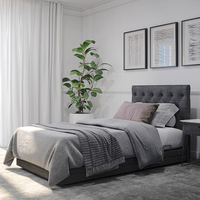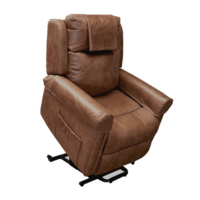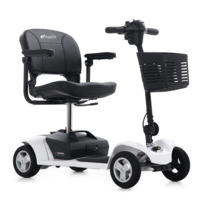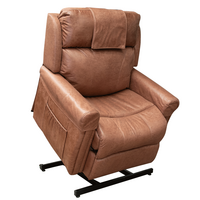How To Choose The Right Bariatric Equipment
Mobility aids and equipment can help people with all kinds of mobility and health concerns live a happier and more functional life. There is a range of aids and equipment available to help with all kinds of daily tasks and activities, both inside and outside the home.
Bariatric equipment is just like other mobility equipment, but it has been specially designed for larger individuals. This equipment can help bariatric patients and their carers with everyday tasks while minimising the risk of injury and falls.
As with any mobility aid, choosing the right bariatric equipment involves a lot of consideration. You’ll want to look at the individual user and their carer, what activities they might need to carry out, as well as how and where the equipment will be used.
In this article, we’re covering just a few of the factors you should consider when choosing bariatric equipment.
For more information about bariatric equipment, take a look at the Buyer’s Guide or contact the team at Mobility HQ for equipment selection advice for your needs.
What is bariatric equipment?
Bariatric equipment refers to any mobility aid or product that’s been designed to meet the specific needs and requirements of bariatric patients.
Bariatric is a clinical term for people who are exceptionally large or obese. Because of their size and weight, bariatric individuals can experience unique health and mobility challenges. These challenges can make it difficult to carry out daily tasks and social activities.
Bariatric equipment is designed to help the user and their carer with daily activities, retain or regain mobility, and minimise social isolation.
The range of bariatric equipment includes:
-
Manual and powered wheelchairs
-
Mobility scooters
-
Lifters and slings
-
Walking frames and rollators
-
Shower chairs
-
Toilet seat surrounds
-
Homecare beds
-
Pressure mattress
-
Lift and recline chairs
Of course, other mobility equipment and aids may also be suitable for bariatric patients. Speak with your medical professional or equipment provider about what type of equipment you might want to explore.
What to consider when purchasing bariatric equipment
As with any mobility equipment, you want to first consider the individual’s needs and what their goals are. Mobility equipment can be used to improve mobility and movement, make certain tasks easier, and to prevent or minimise specific concerns.
For bariatric patients, it’s particularly important that any equipment you use is designed for the person’s weight. Look for information about the safe working load which indicates the weight capacity for that piece of equipment. You may also want to consider whether the equipment can support any increase in weight.
Also remember that people can vary in height, size and body shape so make sure the equipment is suitable or can be adjusted to fit.
Before deciding on the bariatric equipment, you’ll also need to look at whether there is enough space wherever you intend to place it. Bariatric equipment is larger than standard mobility equipment, so you’ll need to allow for extra space around it. For example, bariatric toilet surrounds will need enough clearance for the wider frame.
Also consider whether there is room for any carers to safely work around the equipment, such as a homecare bed or shower chair. And, for wheelchairs or rollators, make sure they’ll fit through the doors or hallways.
If you find that a specific piece of equipment won’t fit the desired space, you may need to look at alternatives or make adjustments to where you place the equipment. If you’re not sure if something is going to work in your space or for the individual’s needs, chatting with a mobility equipment specialist like Mobility HQ is a great place to start.
Mobility HQ offers a range of bariatric equipment available for purchase online and in-store. Feel free to reach out to the team for assistance finding the right equipment for your needs.


































